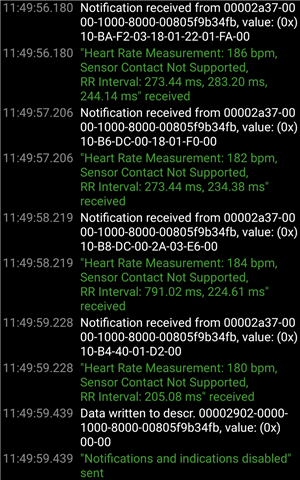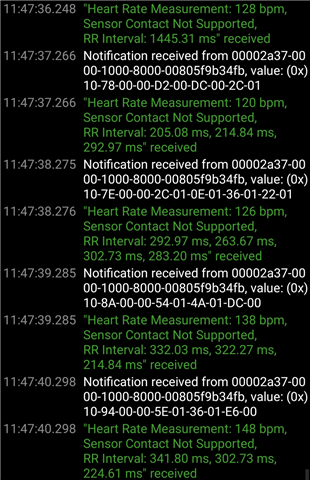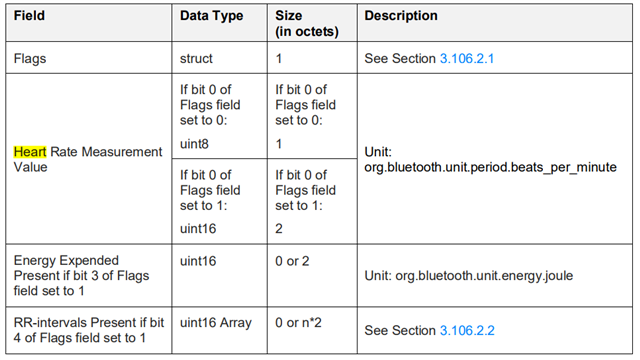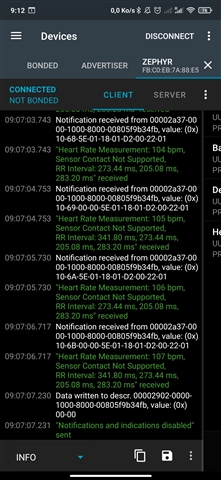Hello,
I was trying out sending RR intervals on the Heart Rate Measurement service and seeing what happens in nRF Connect. But, something is weird with the way the values are interpreted in the app. The flag for Energy Expended is set to 0, so there should not be any in the packet. But if bytes 2 and 3 of the hrm packet are used to send RR intervals , they are just ignored:

Whatever RR interval is in bytes 2 and 3 is straight up ignored.
Here is another example with putting RR intervals values from byte 4 onward instead of byte 2 onward:

This time, no RR Interval value is ignored!
This is the table from the spec as reference:

Could somebody explain what I am doing wrong ?
Thank you for your help.
Best regards,



